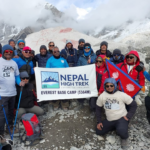Guatemala’s world-famous Lake Atitlán has often been referred to as the Latin America Lake Cuomo for its tranquil setting and beautiful surrounding Mayan villages. Almost 85,000 years back, Lake Atitlán was discovered after a volcanic eruption. Today, this lake is covering an area of 48 square miles and is 19 miles long and 6 miles wide. The word Atitlán is Mayan word for “the place where the rainbow gets its colors”.
You will find thirteen Mayan villages that are very close to the the lake’s shores. Atitlán villagers are proud of their Mayan heritage, and much of the historical indigenous culture has been preserved today. In some areas, the men wear traje. It is a traditional dress. Native languages that are spoken are Tz’utujil and Kaqchikel. Atitlán Mayans are known for being friendly, funny, welcoming of strangers, and also shy.
The lake and the surrounding mountains offer all kinds of recreational activities, including swimming, hiking, cycling, fishing, and scuba diving. Three volcanoes dotting the lake’s southern perimeter incldue San Pedro Volcano, Tolimán Volcano, and Atitlán Volcano. Lake Atitlán has fantastic hiking trails with breathtaking views everywhere. You are also only a couple hours drive from the popular Acatenango volcano hike, which is probably the most well sought after volcano in the region!
Panajachal is Atitlán’s real tourist’s attraction. In 1960s, Panajachal gain popularity among American and European backpackers. Today many foreigners have decided to live in Panajachal full time. For the people of Guatemala City, Panajachal is a must visit place on weekends. Also, the lake often hosts seasonal boating competitions.
For those who travel worldwide San Pedro La Laguna rivals Panajachal is an important place to visit. The highlight of this town is its ambience. You can easily find any English language school and nice accommodation choice. Not very far from Panajachal is the small village of Santa Catarina Palopó. Santa Catarina Palopó features adobe houses and it has some of the lake’s best accommodation options. The small village of Santa Cruz de La Laguna is located west of Panajachal and it is accessible via boat.
In 2022 Lake Atitlán announced it would follow El Salvador’s adoption of Bitcoin and brand itself “Bitcoin Lake”. Today, residents, merchants, and tourists are using cryptocurrencies as means of payment. Bitcoin and other cryptocurrencies like Ethereum, Solana, and Cardano offer economic freedom that is not found in current fiat currencies or other cryptocurrencies. Between 60-65% of people in Guatemala do not have access to a bank account, which creates endemic poverty. Cryptocurrencies give Guatemalans the ability to use digital payments.
Bitcoin Lake’s goal is to attract the Bitcoin tourists and stimulate economic growth. El Zonte, the basis of El Salvador’s adoption of Bitcoin, saw tremendous growth in its tourism following its Bitcoin adoption. Residents and businesses in Atitlán want to tap into the Bitcoin success. Atitlán residents and tourists now can use cryptocurrency wallets such as Cash App, Muun, and Avana Wallet, to send and receive instant digital payments on their mobile phone without a bank account.
In the long term, the Bitcoin Lake aims to use Bitcoin mining to help generate basic income for people around the lake. The leaders want to help build a reliable and renewable energy network using Bitcoin mining and renewable energy sources.







